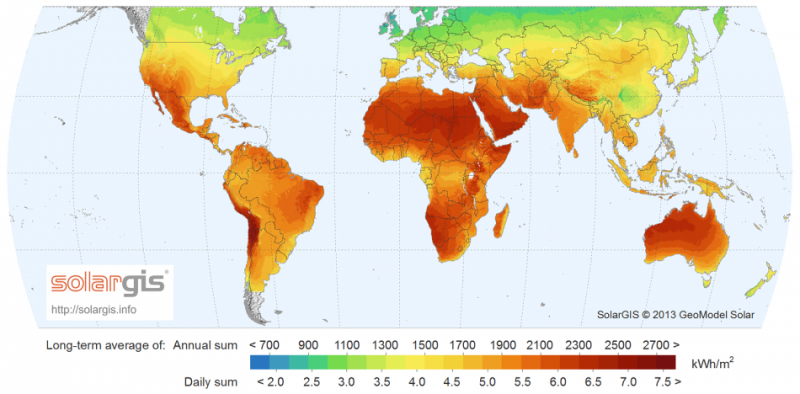Solar power in Germany – output, business & perspectives – Clean Energy Wire
Quick facts
(Figures for 2023; Sources: BSW Solar, UBA, AGEB)
Number of solar arrays installed: 3.7 million
Total capacity installed: 81 GWp
Output: 61 TWh
Projected expansion: 215 GWp in 2030
Share in gross power production: 11.9 %
Employment: 58,500 (2021 est.)
Output
Despite being among the countries with the least sunshine hours, Germany is one of the largest solar power producers in the world. After leading the field for several years, the country ranked 5th globally in installed capacity in the International Renewable Energy Agency’s (IRENA) global ranking in 2021. At the end of 2023, the country boasted a capacity of about 61 gigawatts (GW), according to figures by solar PV industry group BSW Solar.
In contrast to conventional energy systems focused on big and centralised producers, tens of thousands of small solar panel operators have become an important part of the German energy system. In 2023, all solar PV operators together produced about 12 percent of the country’s net power consumption, contributing to a total renewable power share of 52 percent. Solar power’s global share in power generation stood at about 4.5 percent in 2022, according to the International Energy Agency (IEA).
Solar arrays can contribute a much greater share to the German power mix during particularly sunny times. On 7 July 2023, solar power reached its highest output ever in Germany so far, providing 68 percent of the entire electricity mix at about noon, when both sun intensity and usually also power consumption are at peak levels. Throughout June 2023, solar PV had an output of 9 terawatt hours (TWh), according to research institute Fraunhofer ISE. The total output in that year was 61 TWh.
The high output, both in the short-term around midday and in the long-term during summer, is offset by a reciprocally lower or non-existent output during the winter and at night, respectively, highlighting the need for reliable storage technology to complement renewables expansion. However, sunny weather and hot temperatures are not automatically leading to higher solar power output, as solar modules lose electric tension when they become hot, which brings down their capacity despite the stronger radiation.
Fraunhofer ISE says solar panels achieve up to 980 full load hours per year in Germany, meaing about ten percent of the year – or less than half of the amount that wind power can deliver. The researchers estimate that 1,030 full load hours are possible in the country. However, this is still far below the nearly 6,600 full load hours that lignite plants ran in 2016.
Adding more capacity also acts as a check against oscillating solar power production levels due to weather effects. Despite experiencing a comparatively cloudy summer but thanks to capacity expansion, solar PV installations between January and August 2021 generated roughly the same amount as in the much sunnier previous year.



